Michigan’s stunning lakes attract thousands of tourists every summer looking for a refreshing swim and scenic beauty. However, not all lakes are safe or legal to enter, and ignoring posted restrictions can lead to serious health risks, legal trouble, or even life-threatening situations. Understanding why certain lakes are off-limits and knowing how to spot warning signs can protect you and your loved ones during your visit.
E. Coli and Bacterial Contamination
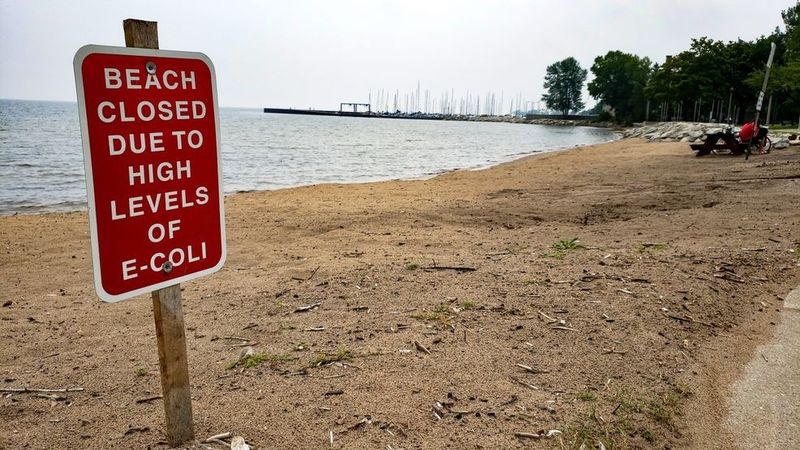
High levels of E. coli bacteria make some Michigan lakes unsafe for swimming, particularly after heavy rainfall or in areas near agricultural runoff. Swimming in contaminated water can lead to gastrointestinal illnesses, ear infections, and painful skin rashes that can ruin your entire vacation. Many tourists ignore posted advisories or swim at unmonitored beaches where bacteria levels haven’t been tested recently.
Public beaches undergo routine testing, and health officials issue advisories when bacteria counts exceed safe limits. However, smaller lakes or private access points may lack regular monitoring. Storm runoff carries bacteria from sewage systems, animal waste, and urban pollution directly into lakes.
Check the Michigan Department of Environment’s beach monitoring website before your trip. Avoid swimming for at least 48 hours after heavy storms, and never swim near storm drain outlets or areas with visible pollution.
Harmful Algal Blooms and Toxic Bacteria

During warm summer months, certain Michigan lakes develop blooms of blue-green algae that produce dangerous toxins. These blooms appear as thick, paint-like scum on the water surface and can cause severe skin irritations, respiratory issues, and stomach illnesses. Tourists often mistake these blooms for harmless plant growth and wade right in without realizing the danger.
Blue-green algae thrive in calm, warm waters with high nutrient levels. Contact with the toxins can cause rashes, blistered lips, and in severe cases, neurological symptoms. Children and pets are especially vulnerable because they’re more likely to swallow contaminated water while playing.
Before entering any lake, scan the surface for unusual green or blue discoloration and musty odors. If you notice these signs, choose a different swimming location. Local health departments regularly test popular beaches and post advisories when blooms are detected.
Submerged Hazards and Underwater Obstacles
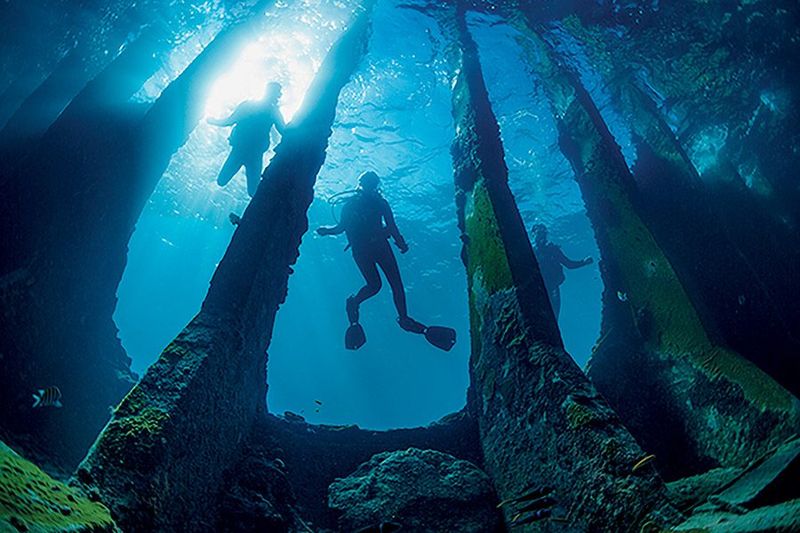
Restricted lakes often hide dangerous underwater obstacles that can cause serious injuries to unsuspecting swimmers. Submerged rocks, fallen trees, old dock pilings, and abandoned equipment lurk beneath the surface, invisible from shore. Sudden drop-offs can plunge swimmers from shallow water into depths over their heads without warning.
Unlike maintained public beaches where hazards are regularly removed, restricted lakes remain unmonitored and uncleared. Divers and jumpers face particular risk when entering unfamiliar waters. Sharp metal, broken glass, and concrete debris from old structures can cause deep cuts requiring stitches or tetanus shots.
Water clarity varies dramatically in Michigan lakes, making it impossible to see obstacles even in relatively shallow areas. Never jump or dive into unfamiliar water, and always enter gradually while watching for hazards. Wearing water shoes provides some protection against sharp objects on lake bottoms.
Dangerous Currents and Unpredictable Water Conditions
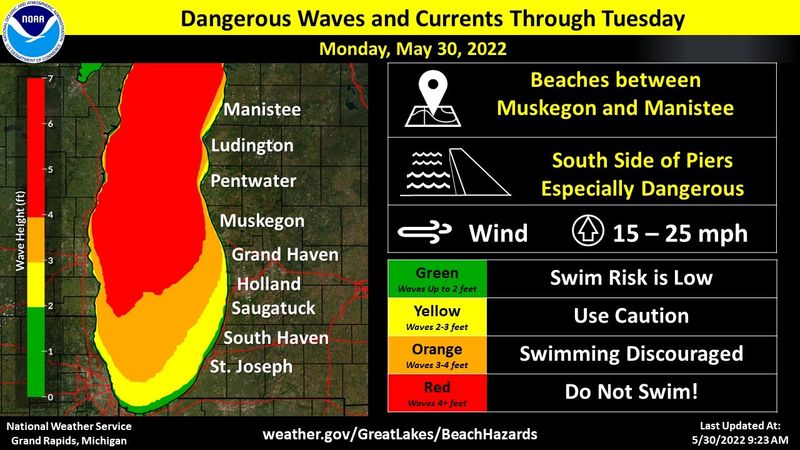
Strong currents and undertows develop in certain Michigan lakes, especially during periods of high water levels or after significant rainfall. What appears calm from shore can hide powerful currents capable of pulling even strong swimmers away from safety. These conditions are particularly dangerous in lakes connected to rivers or in narrow channels between lakes.
High water levels create faster-moving currents and submerge normal landmarks that swimmers use for orientation. Cold water temperatures, even in summer, can cause muscle cramps and rapid exhaustion. Many restricted lakes lack lifeguards, rescue equipment, or nearby help if someone gets into trouble.
Watch for signs of current by observing floating debris or ripples on the water surface. Never swim alone in unfamiliar lakes, and always tell someone your plans. If caught in a current, swim parallel to shore rather than fighting directly against the flow.
PFAS Contamination and Chemical Exposure
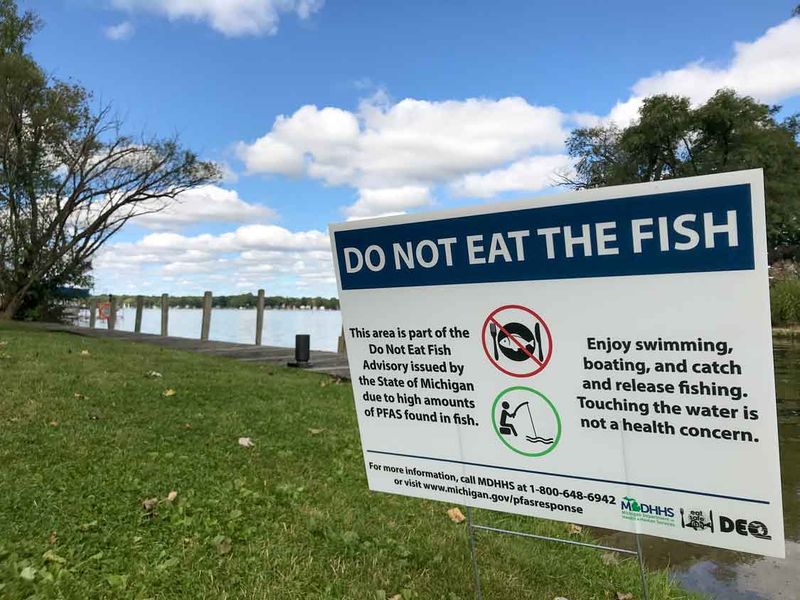
Perfluoroalkyl substances, commonly known as PFAS, have contaminated several Michigan lakes and pose a serious threat to swimmers. These chemicals accumulate in water and especially in foam that collects along shorelines, creating concentrated exposure zones. When you swim in or touch contaminated foam, PFAS can enter your body through skin contact or accidental ingestion.
Research has linked PFAS exposure to high cholesterol, liver damage, and immune system problems. The Michigan Department of Health and Human Services specifically warns visitors to avoid any foam on water bodies throughout the state. Many restricted lakes have elevated PFAS levels from industrial pollution or military sites.
Always check local water quality reports before planning a swim. If you see foam accumulating on the water, stay out completely and keep children and pets away from the shoreline.
Wildlife Encounters and Natural Threats

Michigan’s restricted lakes provide habitat for wildlife that can pose risks to swimmers who enter their territory. Snapping turtles, some weighing over 30 pounds, inhabit many lakes and can deliver powerful bites if threatened or accidentally stepped on. These prehistoric-looking creatures often rest in shallow, murky water where swimmers can’t see them.
Water snakes, though mostly non-venomous, startle swimmers and can bite defensively. Invasive species like zebra mussels create razor-sharp surfaces on rocks and submerged objects that easily slice through skin. Leeches attach to swimmers in some lakes, particularly those with heavy vegetation.
Protected wetland areas restrict swimming specifically to preserve wildlife breeding grounds. Disturbing nesting areas can result in aggressive behavior from protective parent birds or animals. Respect all wildlife warning signs and choose designated swimming beaches where wildlife conflicts are minimal and assistance is readily available.
Legal Consequences and Property Violations
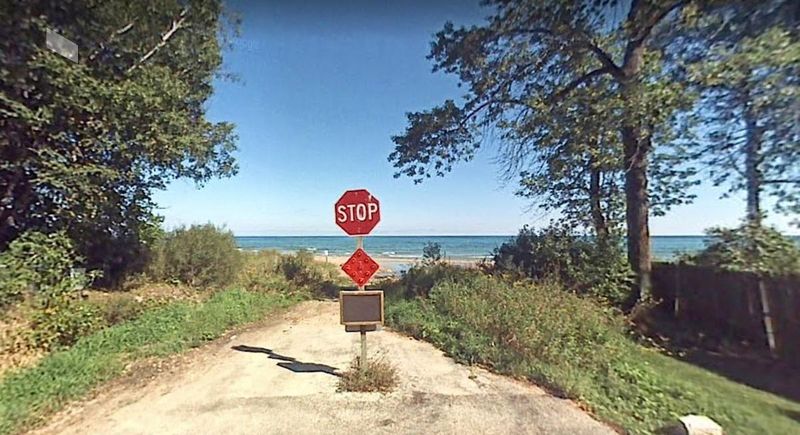
Swimming in restricted Michigan lakes can result in significant legal consequences that many tourists don’t anticipate. Private property owners have the right to restrict access to their lakes, and trespassing violations can lead to fines ranging from $100 to $500 or more. Environmental protection zones carry even steeper penalties for violations.
Many beautiful lakes visible from roads or hiking trails are actually privately owned or protected conservation areas. Posted signs aren’t always obvious, and tourists sometimes assume all natural water is public access. Law enforcement regularly patrols popular restricted areas during summer months and issues citations to violators.
Beyond fines, trespassing creates liability issues if injuries occur on private property. Some property owners have successfully sued trespassers for damage to shorelines or docks. Always verify lake access rights before entering any water. Michigan offers hundreds of legal public beaches and swimming areas that provide safe, beautiful alternatives without legal risks.
Dear Reader: This page may contain affiliate links which may earn a commission if you click through and make a purchase. Our independent journalism is not influenced by any advertiser or commercial initiative unless it is clearly marked as sponsored content. As travel products change, please be sure to reconfirm all details and stay up to date with current events to ensure a safe and successful trip.